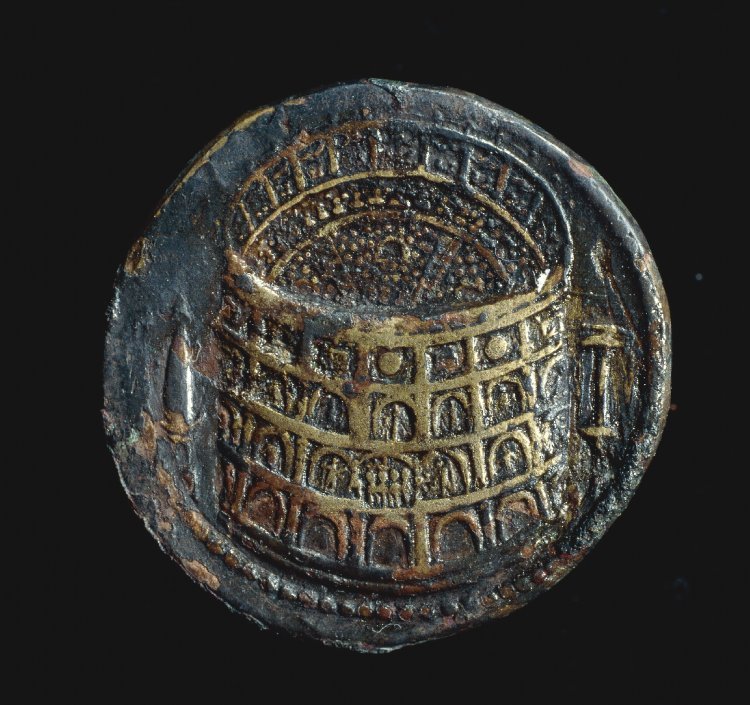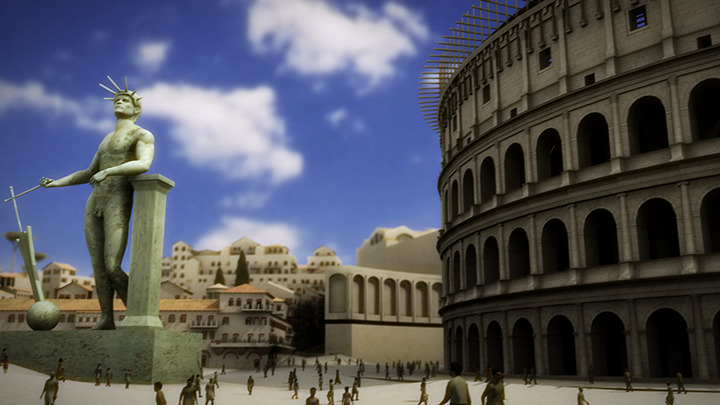Sculpture
While almost no sculpture survives from the Colosseum, scholars suspect that sculptures of Roman gods and goddesses, among various other figures once filled the exterior arches.1 Figures of some sort can be seen in depictions of the Colosseum's exterior on coins minted during the reign of emperor Titus.2 The coins pictured here date from 80-81 CE, contemporary to the dedication of the Colosseum under emperor Titus. Though they are unidentifiable, some historians take this as evidence of statuary that once adorned the Colosseum.3 While pedestal bases for statues can still be found within the Colosseum itself, little statuary survives within the Colosseum.4
Another notable statue associated with the Colosseum was not found within the structure itself, but adjacent to it. A massive statue, which many think portrayed emperor Nero, was positioned next to the amphitheatre. It was this statue, termed a "colossus", which ultimately gave us the common name for the Flavian Amphitheatre that is used today: the Colosseum.5
_____________________________
1 Filippo Coarelli, The Colosseum (Los Angeles: J Paul Getty Museum, 2001), 122.
2 Coarelli, The Colosseum, 122.
3 Coarelli, The Colosseum, 122.
4 Coarelli, The Colosseum, 124.
5 Keith Hopkins and Mary Beard, The Colosseum (Cambridge, MA: Harvard University Press, 2005), 34-35.

